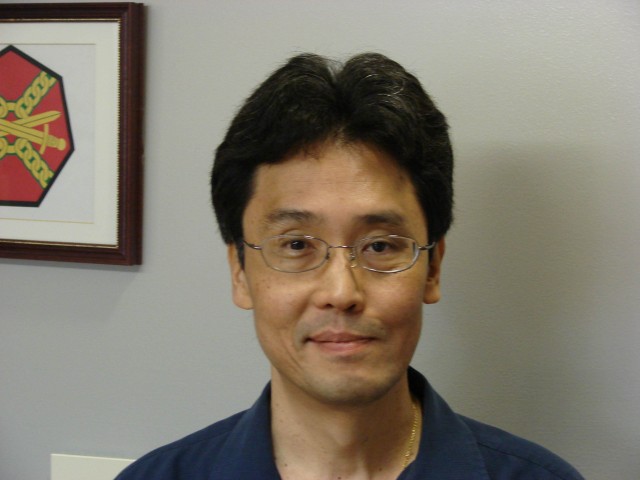
SCHOFIELD BARRACKS, Hawaii - Master planner Michael Kumabe would have been perfectly content to live his professional life in the shadow of the facilities and infrastructure projects he helps develop for the U.S. Army in the Pacific.
Of course, then his bosses had to go and blow it, singing the praises of the man whose visionary work continues to have a profound impact on the lives of thousands of service members and their families.
As a result, Kumabe has been chosen the 2009 Stalwart Award winner for the Pacific Region (Hawaii, Alaska, Japan). The selection was announced earlier this month during the Installation Management Command (IMCOM) Garrison Commanders' Conference in Baltimore, Md.
The Stalwart Award annually recognizes the outstanding accomplishments of IMCOM employees, Soldiers or civilians, from each of the command's six regions. Recipients are selected for being model leaders, exemplifying the spirit of IMCOM and contributing significantly to the success in carrying out their command's mission.
"I was surprised at the honor," admitted the soft-spoken Kumabe, who's served as chief of the planning division within the Army's Directorate of Public Works (DPW) since 2006. "Didn't expect it."
He manages a staff of 14 employees that includes master planners and real estate agents, and credits them with helping to meet the demands of the ever-expanding Army in the Pacific.
"This award is not about one person working alone," said Kumabe, a resident of Mililani. "It was a group effort.
"There are a lot of people who are doing great things here," he added. "So many of them could have qualified for this award, and I'm not sure that I was any better than them."
Count Alan Goo, DPW's deputy director, among those who beg to differ with the self-effacing Kumabe.
"Michael is no doubt an impressive individual. He's got a good grasp of not only what's happening now, but what's to come in the future," Goo said. "He's also got the leadership abilities to pull everything together when it comes to the development of all Army facilities in Hawaii, and you need that type of leader.
"After all," Goo continued, "you can have a carriage full of strong horses, but without a capable person to lead them, you'd have horses running in all different directions."
Kumabe's innate ability to work with a variety of people, Goo noted, has been just as important to his success as have been his visionary and leadership talents.
"Part of master planning is being a super technician, but the other part is understanding the politics that are involved in any process. This is something that is very unique to Michael," Goo explained. "Not many have the ability to merge the political and the technical side of master planning. Michael blends those abilities very well."
Among Kumabe's noteworthy accomplishments over the past year were the following:
Aca,!AcImplementing an early intervention program that called for environmental hazards to be identified before any military construction site project began. In doing so, Kumabe and his team were able to prevent any delays in the projects' completion times, as well as avoid any cost overruns.
"It was a proactive approach that our staff took in researching all of our historical records," Kumabe explained. "We wanted to know things like whether the place was previously a dumpsite or whether the facility had termite problems. This allowed us to prepare for all of the potential problems we might encounter."
Aca,!AcManaging the development of the $260 million "Grow the Army" complex, here. Despite having no prior infrastructure to work with - not to mention dealing with a less-than-ideal terrain as the footprint - Kumabe's team was able to keep the project on track and under budget.
Aca,!AcEliminating the substandard World War II hangars that housed the Combat Aviation Brigade and consolidating the Soldiers into one contiguous complex. The aviation facility is expected to provide Soldiers with a place "to live, work and play without the need for automobiles," Goo said.
Aca,!AcGaining Congressional support for the Saddle Road Project on the Big Island, where more than seven miles of new roadway will be paved to benefit both military and civilian drivers traversing the island.
With so many successful projects on his resume, Kumabe has learned to find joy in each part of the construction process. Still, he admitted that witnessing the conclusion of his projects makes the journey particularly worthwhile.
"Most of our projects take years to complete," said Kumabe, who's currently working on the design of the new Fort Shafter-based U.S. Army Pacific Command and Control facility, which, when built, is expected to be the most technologically advanced building in Hawaii, equipped with energy-efficient lighting and mechanical systems.
"To finally see something constructed after such a long time is, yeah, very satisfying."

Social Sharing